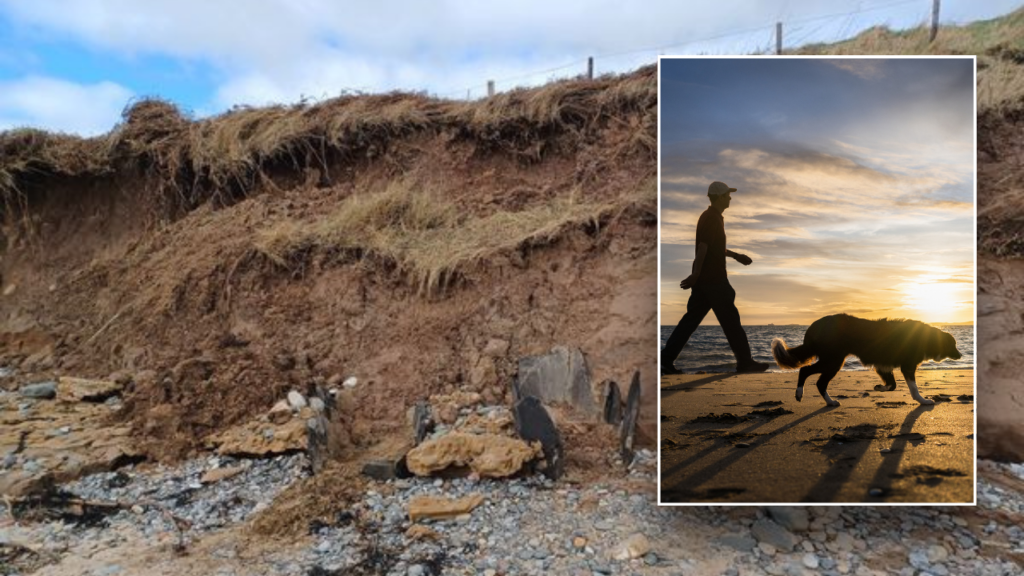A man walking his dog in the United Kingdom inadvertently helped archaeologists and geologists make surprising discoveries at a local beach, according to officials. The Northumberland Coast National Landscape officials recently published a blog post detailing the unexpected finds that were made at Foxton Bay in Northumberland, located in North East England. The dog walker came across unusual pits near the shore, which officials initially thought could possibly be graves dating back to the Bronze Age or medieval era. However, after an excavation, experts determined that these pits were actually most likely bait or fish tanks from the post-medieval or modern periods. The blog post explained that the tanks had key features such as side and base slabs made of shale and a thick clay lining, were around 1m x 0.5m in size, oval-shaped, and did not have top slabs.
According to Helen Wilson-Beevers, the communications officer for the Northumberland Coast National Landscape, one of the pits was first noticed in 2013, but the rest of the structures were unknown to officials until the recent discovery. Wilson-Beevers stated that the current hypothesis is that these structures date back to somewhere between the 17th and 20th centuries. Local historian Adrian Osler was able to provide information about historical fishing activity in the area, finding evidence of a local fishery in the 19th century, which supports the bait tank hypothesis. Osler suggested that the pits could have been used for storing bait, live catch, or preserving lines and nets, based on historic shoreside activities.
The tanks were cut into beachrock, a rare formation of seashells and laminated shells, which was described by a geologist as surprising given that it is more common in tropical and subtropical environments. The discovery of the beachrock has helped geologists narrow down the timeline for its formation to between approximately 1,000-6,000 years ago, suggesting fluctuations in sea level since the post-glacial period. Officials are unsure if the beachrock is natural or artificial, but it has provided insight into how coastal erosion has evolved over time. Wilson-Beevers mentioned the possibility that the beachrock could have been man-made, possibly a mixture of beach sand and lime to stabilize the bait traps, but the prevailing assumption is that the beachrock indicates a historical high tide mark that was further inland than the current coastline.
Overall, the unexpected discoveries made by a man walking his dog at Foxton Bay have shed light on the historical fishing practices in the area and provided valuable information about the region’s coastal evolution. The collaboration between archaeologists, geologists, and local historians has helped piece together the story of these intriguing structures and their significance in understanding the past. This serendipitous find serves as a reminder of the importance of remaining curious and observant in our surroundings, as history and hidden treasures may be waiting to be uncovered just beneath the surface.












